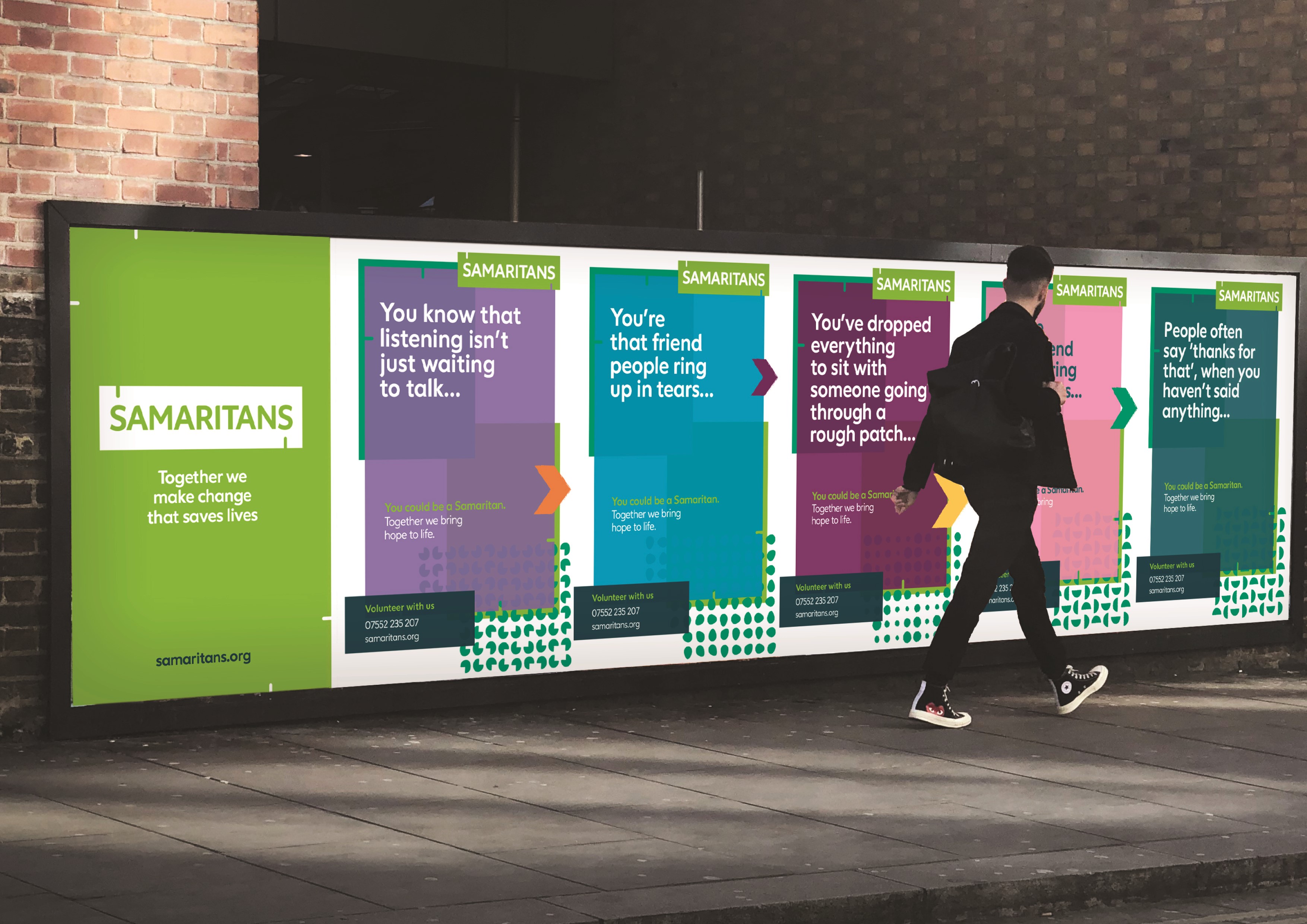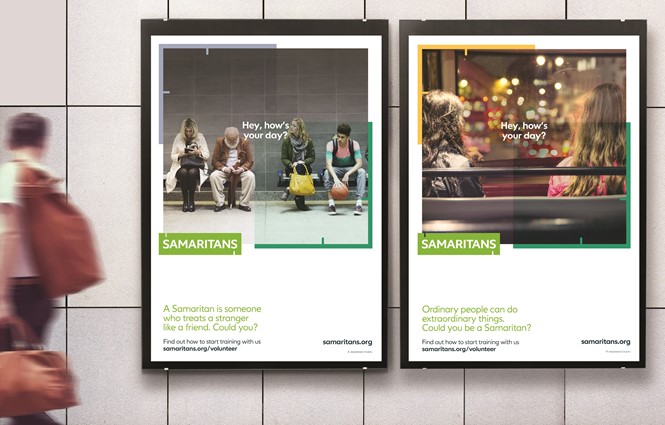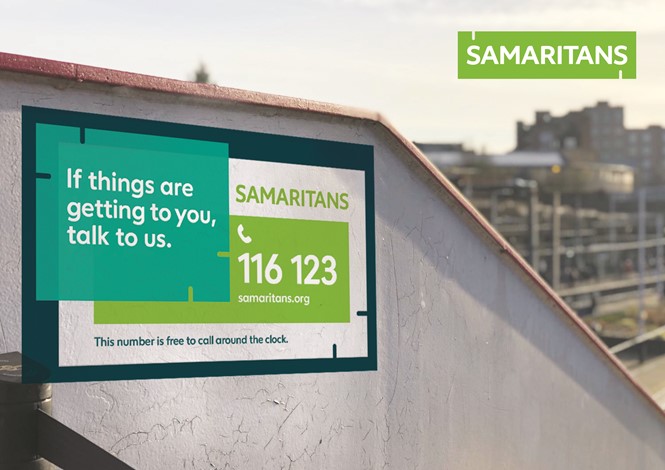Samaritans infuses brand with hope, life and connection
Samaritans is a unique charity. It was established in 1953 by an Anglican vicar who operated an emergency telephone line, speaking to anyone with thoughts of suicide. From one person, Samaritans soon grew into a movement, operating across the UK and internationally.
But, the charity had recently developed beyond the core service of its renowned emergency helpline. Though its work has never strayed from preventing people from taking their own lives, its remit had expanded to encourage a broader cultural change, fostering greater human connections. The visual identity itself was also increasingly corporate, and failed to communicate with young people.
This presented challenges not only in terms of encouraging people to seek support from the Samaritans, but in inspiring volunteers. The charity also needed to reposition its brand while simultaneously repositioning the national conversation around suicide prevention.
Instead of focusing on a single moment – the moment at which people might call for help – the new brand inspires a culture of positive connection as a means of preventing people from taking their own lives.
“One of the key challenges was how to create an engaging brand that not only broadened out the perception of Samaritan's role, but also navigated a highly complex, very specific, often very different set of needs across a wide range of audiences,’’ says Max du Bois, executive director of Spencer du Bois, which developed the new brand.
The brand was crafted in response to that broadened conversation. It equips the Samaritans with an expansive range of imagery and brand assets that can be used when communicating with various audiences – from service users to volunteers to government stakeholders. However, the brand is also unified effectively by visual devices like the connection points built into the new logo.


“We wanted to create an emotional revolution for Samaritans. Whether that is helping to recruit more volunteers, raise more money or just reconnect you with powerful qualities you may already have. I love the idea of ordinary people doing extraordinary things, and the realisation that anyone can be a ‘Samaritan’ in multiple ways.’’

A series of colourful patterns and human-centric, joyful imagery helps bring the brand to life, encouraging a deeper conversation about the ties that bind people together. The copy style is particularly effective when deployed in Samaritans volunteer-focused communications and in the awareness-building advertisements. The new strapline emphasises the organisation’s expanded remit, stating Samaritans is there ‘to help bring hope to life.’
This expanded arsenal of brand assets is not just beneficial visually, but in terms of the organisation’s capability to communicate with its stakeholders.
“Whilst we continue to be here for people in moments of crisis, we hope to reach more people earlier who are struggling to cope too. We are working in many different ways to reach more people. That includes campaigning to make suicide prevention a priority with government and working with other relevant organisations,” says Paul McDonald, executive director of external affairs at Samaritans.
Initial responses, from volunteers and those stakeholders who were consulted throughout the brand process have been positive, as the brand has effectively communicated the purpose behind the Samaritans, while also seeking to make broader change in order to prevent people from taking their own lives.
Claire Biscard, creative director at Spencer du Bois, adds, “We wanted to create an emotional revolution for Samaritans. Whether that is helping to recruit more volunteers, raise more money or just reconnect you with powerful qualities you may already have. I love the idea of ordinary people doing extraordinary things, and the realisation that anyone can be a ‘Samaritan’ in multiple ways.’’














